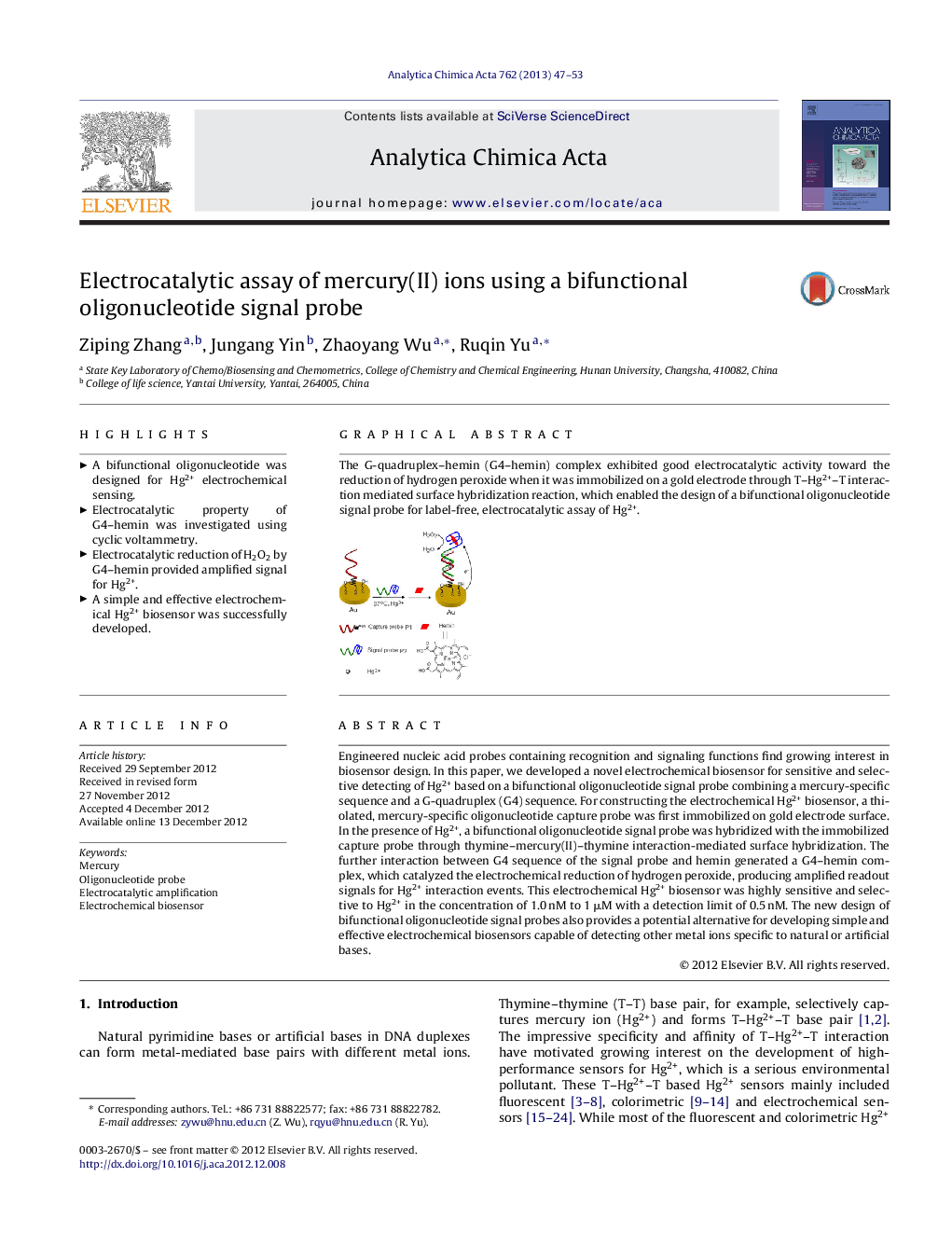| Article ID | Journal | Published Year | Pages | File Type |
|---|---|---|---|---|
| 1165619 | Analytica Chimica Acta | 2013 | 7 Pages |
Engineered nucleic acid probes containing recognition and signaling functions find growing interest in biosensor design. In this paper, we developed a novel electrochemical biosensor for sensitive and selective detecting of Hg2+ based on a bifunctional oligonucleotide signal probe combining a mercury-specific sequence and a G-quadruplex (G4) sequence. For constructing the electrochemical Hg2+ biosensor, a thiolated, mercury-specific oligonucleotide capture probe was first immobilized on gold electrode surface. In the presence of Hg2+, a bifunctional oligonucleotide signal probe was hybridized with the immobilized capture probe through thymine–mercury(II)–thymine interaction-mediated surface hybridization. The further interaction between G4 sequence of the signal probe and hemin generated a G4–hemin complex, which catalyzed the electrochemical reduction of hydrogen peroxide, producing amplified readout signals for Hg2+ interaction events. This electrochemical Hg2+ biosensor was highly sensitive and selective to Hg2+ in the concentration of 1.0 nM to 1 μM with a detection limit of 0.5 nM. The new design of bifunctional oligonucleotide signal probes also provides a potential alternative for developing simple and effective electrochemical biosensors capable of detecting other metal ions specific to natural or artificial bases.
Graphical abstractThe G-quadruplex–hemin (G4–hemin) complex exhibited good electrocatalytic activity toward the reduction of hydrogen peroxide when it was immobilized on a gold electrode through T–Hg2+–T interaction mediated surface hybridization reaction, which enabled the design of a bifunctional oligonucleotide signal probe for label-free, electrocatalytic assay of Hg2+.Figure optionsDownload full-size imageDownload as PowerPoint slideHighlights► A bifunctional oligonucleotide was designed for Hg2+ electrochemical sensing. ► Electrocatalytic property of G4–hemin was investigated using cyclic voltammetry. ► Electrocatalytic reduction of H2O2 by G4–hemin provided amplified signal for Hg2+. ► A simple and effective electrochemical Hg2+ biosensor was successfully developed.
